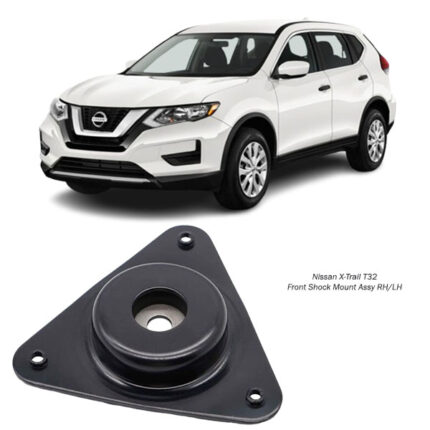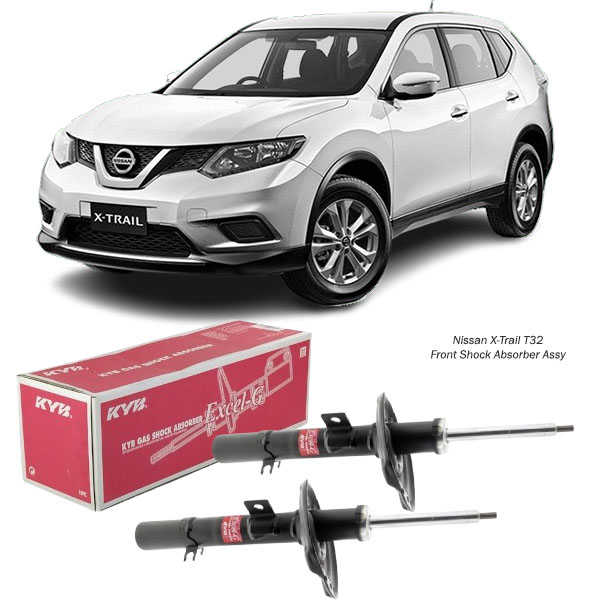-7%
Get Nissan X-Trail T32 Front Shock Absorber Assy 3340168 in Kenya
Every bump, dip, or rough patch on the road sends a shock through your vehicle — but thanks to the Front Shock Absorber Assy, those jolts are tamed, your handling stays tight, and your ride stays smooth. 🚗💨
Though it may work quietly behind the scenes, this assembly is one of the most critical parts of your suspension system. It plays a huge role in comfort, safety, and control — especially over rough or uneven surfaces. Let’s dive into what makes the Front Shock Absorber Assy so important and how it impacts your daily driving experience. 🌍🧰
🔍 What Is a Front Shock Absorber Assy?
The Front Shock Absorber Assembly is a complete, pre-assembled suspension component located just behind the front wheels. Its job? To absorb, dampen, and control the motion of the suspension — making sure your wheels stay in contact with the road, no matter how rough the terrain gets. 🛞🌧️
It often comes as a unit that includes:
-
🌀 Shock Absorber (Strut or Damper): The heart of the assembly that absorbs kinetic energy from road impacts.
-
🧱 Coil Spring (in some cases): Helps support the vehicle’s weight and returns it to its original height after compression.
-
🔩 Mounting Hardware & Top Mount (Strut Mount): Connects the shock absorber to the body/frame and steering knuckle.
Together, this assembly works to ensure stability, control, and comfort. 💯
🎯 Why Is It Important?
When your front shock absorbers are in top shape, you get:
✅ Smoother rides
✅ Better control over turns and corners
✅ Reduced braking distance
✅ Less wear on tires and suspension parts
✅ Improved stability at high speeds
Whether you’re navigating a pothole-ridden road, climbing hills, or cruising down the highway — the shock absorber is working overtime to keep things steady. 🧷🛣️
🧠 How It Works
The magic happens through a clever mix of hydraulic damping and mechanical motion control:
-
As the wheel moves up or down due to a bump, the shock absorber compresses.
-
Inside, hydraulic fluid flows through valves in a piston, slowing down the motion.
-
The resistance created by this fluid flow converts kinetic energy into heat, reducing the bounce.
-
Once the bump is passed, the spring (if present) helps return the suspension to its natural height.
The result? Your tires stay planted on the road and your cabin doesn’t feel like a trampoline. 🛏️➡️🧱
🛑 What Happens When It Wears Out?
Shock absorbers don’t fail overnight — they gradually lose their ability to dampen motion. But when they do, the symptoms are hard to ignore:
-
🫨 Excessive bouncing after hitting a bump
-
🧭 Poor steering response or vehicle “drifting” during turns
-
🧹 Nose-diving when braking
-
💨 Uneven or accelerated tire wear
-
💥 Clunking or knocking sounds over bumps
-
🛞 Reduced braking efficiency
-
🚨 Longer stopping distances
If left unchecked, bad shocks can put more stress on the tires, brakes, steering, and suspension — costing more in the long run and compromising safety. ⚠️
⚙️ Parts of a Front Shock Absorber Assy
Here’s a closer look at what makes up this powerhouse of a component:
1. Shock Body / Tube
The outer casing that contains the damping fluid and piston.
2. Piston & Valve Assembly
Controls the fluid flow, creating resistance to absorb motion.
3. Rod / Shaft
Connects the piston to the mounting point; moves in and out as the suspension compresses.
4. Coil Spring (in strut assemblies)
Supports the vehicle’s weight and cushions against road forces.
5. Mounting Plate / Top Mount
Attaches the shock to the chassis; often contains a rubber bushing or bearing.
6. Dust Boot / Bump Stop
Protects the piston from dirt and damage; the bump stop prevents over-compression.
Each part is engineered for precision and endurance — and when one starts to wear, the whole system can suffer. 🔧💡
🔁 When Should You Replace It?
A good rule of thumb: inspect every 40,000–60,000 km and consider replacement around 80,000–100,000 km, depending on road conditions.
Signs it’s time to replace:
-
Visual leaks (oil around the shock)
-
Broken or sagging spring
-
Noisy suspension
-
Obvious loss of ride comfort or control
-
Failing a “bounce test” (car bounces more than twice when pushed down)
And remember: always replace shocks in pairs — both left and right — to maintain balance and proper handling. ⚖️🛞
🌧️ Driving Conditions That Speed Up Wear
Some environments are tougher on shocks:
-
🌧️ Constant wet or muddy roads (increases corrosion)
-
🪨 Off-road or unpaved terrain (impacts & vibration)
-
🛑 Stop-and-go traffic (frequent suspension use)
-
🏋️♂️ Heavy loads or towing (increased pressure on suspension)
If you drive in any of these conditions regularly, it’s wise to inspect your shock absorbers more frequently. 👀🔍
🧼 Benefits of a Fresh Shock Absorber Assy
Replacing a worn Front Shock Absorber Assy brings immediate results:
-
🧈 Silky-smooth rides
-
🎯 Sharper, more confident steering
-
🛞 Even tire wear and longer tire life
-
💥 Better braking control in emergency stops
-
🧠 Less body roll on corners
-
🚗 Enhanced traction and road grip
-
🔇 Quiet, clunk-free suspension
It’s not just about comfort — it’s about driving confidence and safety with every trip. 🔒💪
🔩 Installation Overview
Though it depends on the vehicle model, typical replacement involves:
-
Lifting and securing the vehicle
-
Removing the wheel
-
Detaching the old shock from both top and bottom mounting points
-
Installing the new shock or strut assembly
-
Ensuring torque specs are followed
-
Realigning the wheels if needed
It’s a detailed but straightforward process when done by a trained technician — and the difference in ride quality is immediate. 🧰🔧
💬 Final Thoughts
The Front Shock Absorber Assy is one of those components that quietly handles some of the toughest tasks — softening impact, boosting control, and protecting your suspension from damage.
Whether you’re cruising through smooth tarmac or navigating the unpredictable roads of everyday life, a healthy front shock absorber keeps you steady, comfortable, and in control. 🛤️✨
When maintained properly, it transforms your entire driving experience — from jittery to joyful, from bumpy to buttery smooth.
Follow us on Facebook for more parts.




Reviews
Clear filtersThere are no reviews yet.